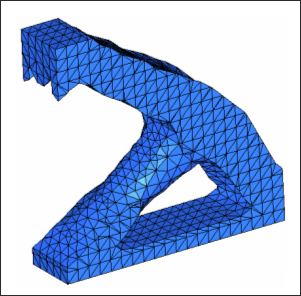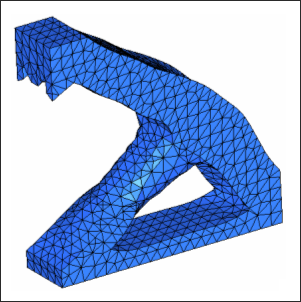Laplacian Smoothing
Laplacian smoothing can be used in the smoothing of the results of topology optimization.
#general parameters
input_file surf
output_file surf.stl
output_code 3
isosurface 1 3 0.300
#specific parameters
laplacian_smoothing 10 30.000 1
Figure 2. Fix Boundary of Iso-Surface

Figure 3. Smooth Boundary of Iso-surface
- The flexibility of controlling the number of smoothing iterations to obtain different degrees of smoothing (possibly a smoothing quality ready for casting). Normally, the iteration number ranges from 5 to 20.
- Smooth boundary of iso-surface with feature angle constrain are seamlessly incorporated into the smoothing process, which is more challenging in a pure CAD system.